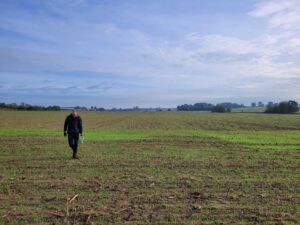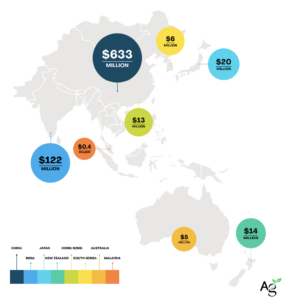Major agrifood businesses are making regenerative agriculture commitments left and right these days. The latest to do so is US-based King Arthur Baking Company. The employee-owned company just announced a new sustainability plan, of which regeneratively grown wheat will play a major part.
By 2030, King Arthur plans to have the following:
- 100% of the flour in its bags milled from regeneratively grown wheat
- All current King Arthur facilities using 100% renewable power
- “Transportation-related” greenhouse gas emissions reduced by 30%
- 100% packaging to include 100% deforestation-free fibers and a minimum of 50% post-consumer recycled content
- Zero-waste from facilities to landfills
The newly announced plan also includes several initiatives around diversity, inclusion and equity amongst King Arthur staff as well as efforts towards responsible purchasing.
Brad Heald, King Arthur’s director of mill relations, tells to AFN that these are not new ideas for the company.
“We’ve always operated from the lens of people, planet, profit. This is kind of an extension, right of that and we’re able to kind of get more involved regionally with our efforts.”
Regen ag: ‘It’s a fluid thing’
King Arthur has been incorporating regenerative practices into its operations for some time now. Currently, its white whole wheat flour product is sourced from the Farmer Direct collective whose farmers are committed to regen ag.
King Arthur has also enrolled in a 20,000-plus-acre regenerative pilot program with milling partner Ardent Mills.
More partnerships with both farmers and millers are in the works — both with those already producing regeneratively grown wheat and those interested in converting acreage. King Arthur has not yet publicly stated how many acres it is currently farming regeneratively.
Heald stresses that, when it comes to regenerative agriculture, there is no one set of standards and practices that suits every farm. In fact, a key characteristic of regenerative agriculture — one that tends to get less airtime than it perhaps deserves — is that there is no “one-size-fits-all” method. A cover crop that works in Kansas may be ill-suited to North Dakota. And farming communities have different needs around the country.
“Regenerative or sustainability have different meanings and applications depending on where you’re growing,” says Heald. “It’s a fluid thing, not only with time, but it’s fluid by region.”
Farmer Direct member Doug Nelson, who runs a farm in central Kansas and works directly with King Arthur, underscores this fluidity by describing his home state. “We’re north central [Kansas], more in the eastern part of the state. We have, year after year, pretty abundant rainfall that gives us more techniques to really aggressively have a regenerative type program.”
But the further westward one travels in Kansas the more a desert the state becomes, he says. This makes the idea of cover cropping more challenging, and will require a different set of tools and practices.
Nelson adds that the bottom-line definition of regen ag is “trying to produce a product in a way that we’re putting more carbon in the soil.”
“If you’re practicing good regenerative farming at the end of the year, you’ve grown a crop and you’ve improved the soil. Each year that you improve your soil that we’re sending better grain down the line to the King Arthur’s the world, they have a better product they have a better substrate to work with to melt flour to continue to produce a quality product.”
Towards 2030:
Education is a key component to transitioning both farmers and acreage, says Heald.
For farmers, it’s about “getting the word out there that [regen ag] makes sense economically, it makes sense environmentally, and it also makes sense for the future your farm.”
“The continued support for technical, and then just even providing a community for growers to talk. There may be liability for new practice, and there are a lot of unanswered questions. If growers can talk to somebody who’s made that step, then maybe they’re more apt to try it.”
Nelson hinted that the future for King Arthur may also include being able to grow cover crops in the desert-like western part of Kansas. This, he says, would be “a game changer.”
Finally, as the company transitions more acreage to regenerative agriculture, it will need to balance consumer expectations and satisfaction with new production methods. That might include reducing nitrogen levels on the crop or changing the protein levels of the wheat.
“Flour is a consumer experience,” says Heald “They expect to look at a recipe, [pour] a cup of flour and come out with a cookie or whatever. We have to balance that consumer expectation with, you know, with the quality and attributes from wheat. There’s a lot of work that we do to make that happen.”
















Sponsored
International Fresh Produce Association launches year 3 of its produce accelerator